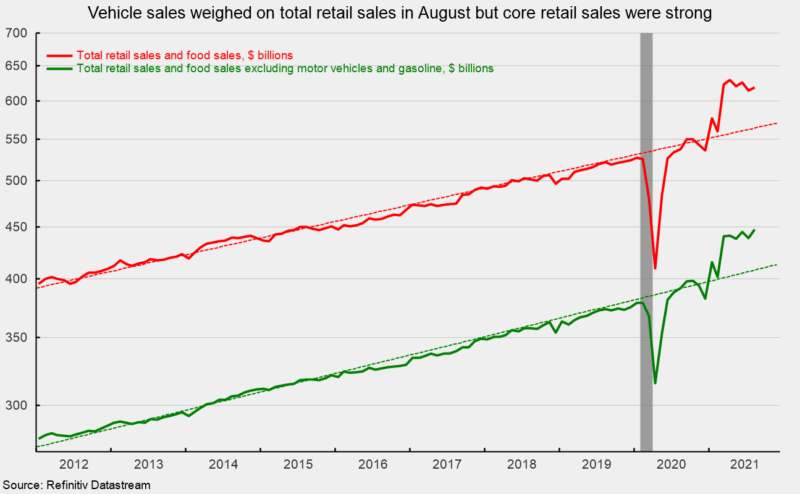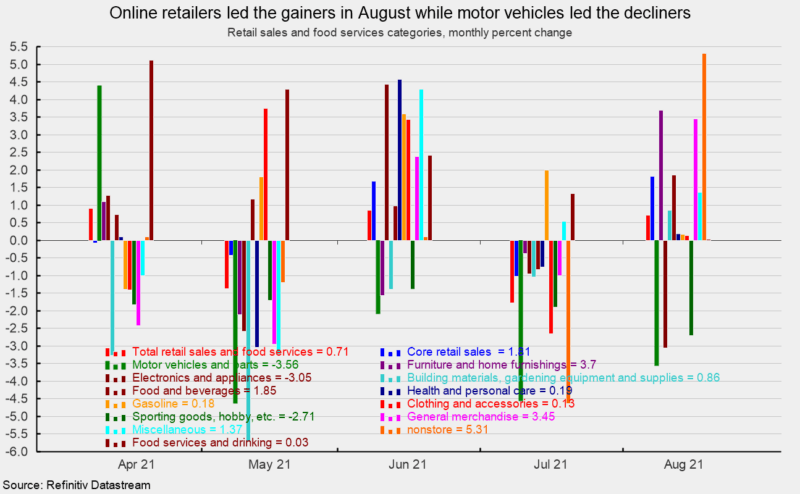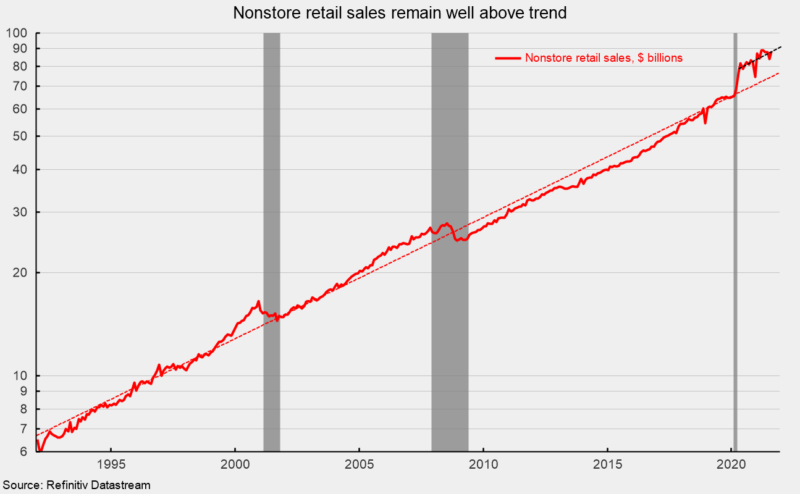Core Retail Sales Post a Strong Gain in August
Retail sales and food-services spending rose 0.7 percent in August following a 1.8 percent drop in July. The three-month annualized growth rate is -0.9 percent though the level of sales is still well above the most recent nine-year trend (see first chart). From a year ago, total retail sales are up 15.1 percent.
Core retail sales, which exclude motor vehicle dealers and gasoline retailers, posted a robust 2.0 percent increase for the month, leaving that measure with an 8.6 percent annualized growth rate over the past three months and a 14.3 percent gain from a year ago. Core retail sales are still well above the nine-year trend (see first chart).
Most categories were up in August with nine posting gains, three showing declines, and one essentially unchanged. The gains were led by a 5.3 percent increase in nonstore store (primarily online) retailers, followed by furniture and home furnishings (up 3.7 percent for August), and general merchandise (up 3.5 percent).
The three categories showing drops in August were motor vehicles and parts dealers, down 3.6 percent, electronics and appliance retailers, off 3.1 percent, and sporting goods, hobby, musical instruments and book stores, down 2.7 percent (see second chart).
Nonstore retailers have been growing at a trend rate of 8.4 percent since 1992 (see third chart). While the pandemic and government lockdowns have distorted consumer spending patterns, online spending continues to be a strong performer with sales growing at a trend rate of nearly 11 percent since April 2020. Compared to the longer-run trend, August nonstore retail sales were almost 19 percent above their long-term trend (see third chart).
Overall, retail sales posted a solid gain in August. Total sales were held back by weak motor vehicle sales. The auto industry continues to struggle with component shortages, driving inventory to record lows and prices up sharply.
Core retail sales (excluding vehicles and gasoline) posted a very strong gain in August and suggests consumers remain resilient in the face of the recent Covid surge. The reopening of the economy has supported a rebound for the labor market and personal incomes, but the tight labor market, materials shortages, and logistical issues are preventing supply from meeting demand, putting upward pressure on prices. Furthermore, while retail sales are showing resilience, Covid continues to cloud the economic outlook and sustain an elevated level of uncertainty.








